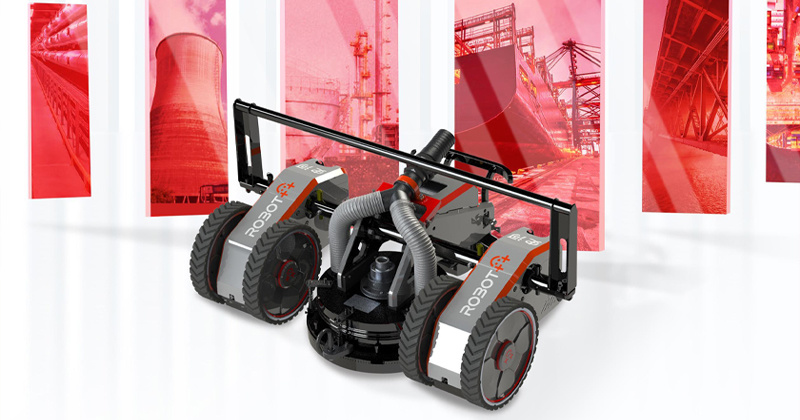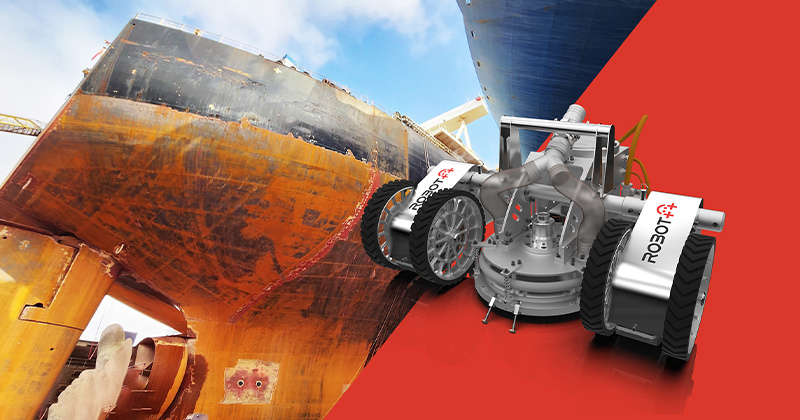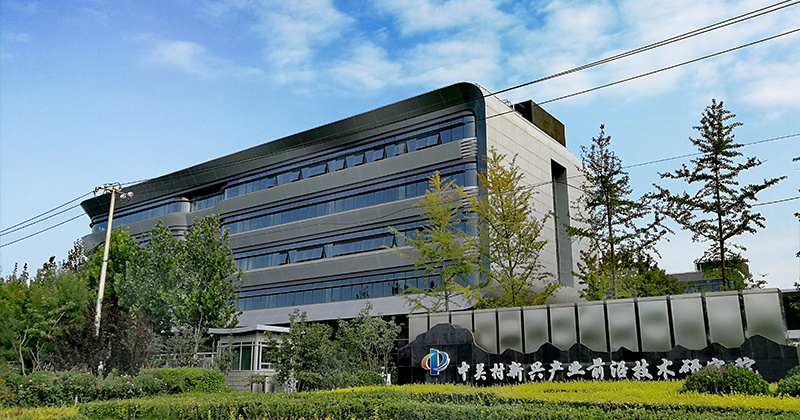The Future of Play: Exploring the Cutting-Edge Technology Behind Oil and Gas Dome Blasting Robots
The Future of Play: Exploring the Cutting-Edge Technology Behind Oil and Gas Dome Blasting Robots Table of Contents 1. Introduction to Dome Blasting Robots 2. Understanding the Technology Behind Dome Blasting 3. Applications of Dome Blasting Robots in Oil and Gas 4. Benefits of Using Dome Blasting Robots 5. Future Developments in Blasting Robotics 6. Challenges Facing Dome Blasting Te
Jun 15,2025
The Future of Play: Exploring the Cutting-Edge Technology Behind Oil and Gas Dome Blasting Robots
Table of Contents
- 1. Introduction to Dome Blasting Robots
- 2. Understanding the Technology Behind Dome Blasting
- 3. Applications of Dome Blasting Robots in Oil and Gas
- 4. Benefits of Using Dome Blasting Robots
- 5. Future Developments in Blasting Robotics
- 6. Challenges Facing Dome Blasting Technology
- 7. Safety Considerations in Dome Blasting Operations
- 8. Case Studies: Success Stories of Dome Blasting Robots
- 9. Conclusion
- 10. Frequently Asked Questions
1. Introduction to Dome Blasting Robots
The oil and gas industry continues to evolve, heavily influenced by advancements in technology. One of the most exciting developments in recent years is the emergence of dome blasting robots. These sophisticated machines are designed to optimize drilling and extraction processes, significantly improving efficiency, safety, and environmental sustainability.
Dome blasting robots are engineered to handle various tasks associated with blasting operations, particularly in oil and gas extraction. Their ability to automate dangerous and labor-intensive tasks makes them invaluable in modern energy production. As we delve deeper into the mechanics and applications of these robots, we will uncover how they are set to redefine the future of the industry.
2. Understanding the Technology Behind Dome Blasting
Dome blasting robots utilize a combination of advanced robotics, artificial intelligence (AI), and specialized engineering to perform their tasks. These technologies work together to enable precision in blasting operations.
Robotic Mechanics and Design
The mechanical design of dome blasting robots is crucial to their functionality. Equipped with articulated arms and sensors, these robots can maneuver in tight spaces and operate effectively in hazardous environments. The design often incorporates durable materials resistant to extreme temperatures and corrosive substances, ensuring longevity and reliability.
AI and Automation
Artificial intelligence plays a pivotal role in the operation of dome blasting robots. AI algorithms analyze data from sensors in real-time, enabling the robots to make rapid adjustments during operations. This capability not only enhances efficiency but also minimizes the risk of human error, which can be critical in high-stakes environments.
Remote Operation Capabilities
One of the standout features of these robots is their ability to operate remotely. This technology allows operators to control the machines from a safe distance, further reducing the risks associated with blasting operations. The integration of augmented reality (AR) and virtual reality (VR) provides operators with a visual interface to monitor and guide the robots effectively.
3. Applications of Dome Blasting Robots in Oil and Gas
Dome blasting robots have a wide range of applications in the oil and gas sector. Their versatility allows them to be utilized in various stages of drilling and extraction processes.
Exploratory Drilling
During exploratory drilling, dome blasting robots can assist in the initial stages of site assessment. They conduct geological surveys and assess the stability of the ground, ensuring safe and effective drilling operations.
Production Drilling
In production drilling, these robots can automate the blasting process, significantly reducing the time required to create drilling holes. The precision of the robots ensures that blasts are executed safely and effectively, optimizing the extraction of resources.
Maintenance and Repair
Dome blasting robots are also valuable in maintenance tasks, such as inspecting and repairing drilling equipment. Their ability to operate in hazardous environments allows for regular checks without putting human workers at risk.
4. Benefits of Using Dome Blasting Robots
The integration of dome blasting robots into the oil and gas industry brings forth numerous benefits that enhance operational efficiency and safety.
Increased Efficiency
By automating the blasting process, these robots can complete tasks faster than human workers. This increased efficiency leads to shorter project timelines and reduced operational costs.
Enhanced Safety
With robots handling hazardous tasks, the risk of accidents and injuries to human workers is significantly reduced. This enhancement creates a safer working environment and helps companies adhere to safety regulations.
Environmental Sustainability
The precision of dome blasting robots minimizes unnecessary explosions, reducing the environmental impact of drilling operations. This capability aligns with the industry's increasing focus on sustainability and environmental stewardship.
5. Future Developments in Blasting Robotics
As technology continues to advance, the future of dome blasting robots looks promising. Research and development in robotics, AI, and automation are likely to yield even more sophisticated machines.
Advancements in AI
Future dome blasting robots will feature enhanced AI capabilities, enabling them to learn from previous operations and adapt to new challenges. This adaptability will improve their efficiency and effectiveness in various environments.
Integration with Internet of Things (IoT)
The integration of IoT technology will allow dome blasting robots to communicate with other machines and systems in real-time. This connectivity will enable better coordination during operations and improve data collection for analysis.
6. Challenges Facing Dome Blasting Technology
Despite their many benefits, dome blasting robots face several challenges that must be addressed for widespread adoption.
High Initial Costs
The initial investment in dome blasting robots can be significant. Many companies may hesitate to adopt this technology due to budget constraints, despite the long-term savings and benefits.
Technological Limitations
Current technology may still limit the capabilities of dome blasting robots. For example, complex geological formations can pose challenges that robots may not be equipped to handle without further advancements.
Workforce Transition
The introduction of automation may lead to concerns about job displacement within the industry. Companies must navigate these workforce transitions carefully, ensuring that employees are trained for new roles in a more automated environment.
7. Safety Considerations in Dome Blasting Operations
Safety remains a paramount concern in the oil and gas industry, especially during blasting operations. Dome blasting robots help mitigate safety risks, but additional measures must be taken.
Regular Training and Certification
Operators of dome blasting robots should undergo regular training and certification programs to ensure they are well-versed in the latest technologies and safety protocols.
Emergency Response Plans
Comprehensive emergency response plans must be established to address potential accidents or malfunctions during operations. These plans should include protocols for remote operation failures and other contingencies.
8. Case Studies: Success Stories of Dome Blasting Robots
Several companies have successfully integrated dome blasting robots into their operations, showcasing the technology's potential.
Case Study 1: EnergyCo
EnergyCo implemented dome blasting robots in its drilling operations and reported a 30% reduction in blasting time. The robots' precision minimized environmental impact and improved safety outcomes.
Case Study 2: OilTech Innovations
OilTech Innovations utilized dome blasting robots for maintenance tasks, significantly reducing the amount of time spent on inspections. The company noted improved operational efficiency and worker safety as a result.
9. Conclusion
Dome blasting robots represent a significant advancement in the oil and gas industry, driven by cutting-edge technology and innovative design. Their ability to automate complex and hazardous tasks enhances safety, efficiency, and environmental sustainability. As we look to the future, ongoing developments in AI and robotics promise to further revolutionize the industry. Embracing this technology will not only improve operational outcomes but also pave the way for a safer and more sustainable energy sector.
10. Frequently Asked Questions
1. What are dome blasting robots?
Dome blasting robots are automated machines designed to perform blasting operations in the oil and gas industry, enhancing efficiency and safety.
2. How do dome blasting robots improve safety?
By automating dangerous tasks, dome blasting robots reduce the risk of accidents and injuries for human workers.
3. What is the role of AI in dome blasting robots?
AI enables dome blasting robots to analyze data and make real-time adjustments during operations, enhancing precision and efficiency.
4. What are the environmental benefits of using dome blasting robots?
These robots minimize unnecessary explosions, reducing the environmental impact of drilling operations and promoting sustainability.
5. What challenges do dome blasting robots face in the industry?
Challenges include high initial costs, technological limitations, and the need for workforce transition and retraining.














